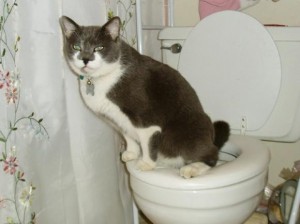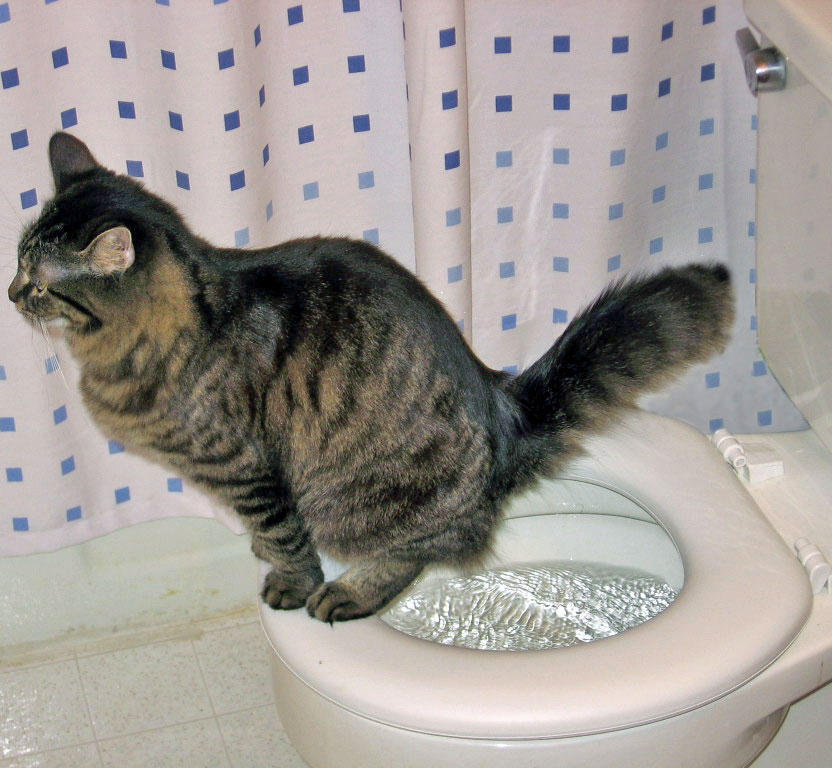What are your insights and beliefs on Should you flush animal waste down the toilet?

When it pertains to getting rid of waste, particularly animal waste, lots of people commonly consider the convenient alternative of flushing it down the bathroom. Nonetheless, this seemingly very easy solution can have significant consequences for the setting and public health. In this article, we'll check out why flushing animal waste down the commode is a poor idea and give alternative approaches for correct disposal.
Intro
Correct garbage disposal is vital for keeping environmental sustainability and public health. While it may appear safe to flush animal waste down the bathroom, it can cause various problems, both for the environment and human well-being.
Dangers of flushing animal waste
Ecological effect
Purging animal waste presents damaging germs and virus right into rivers, which can negatively impact aquatic communities. These virus can pollute water resources and injury aquatic life, interfering with fragile ecological communities.
Public health issues
Animal waste has unsafe germs such as E. coli and Salmonella, which can pose serious health and wellness risks to humans. Flushing animal waste down the toilet can contaminate water supplies, causing the spread of conditions and infections.
Alternatives to flushing
Instead of flushing animal waste down the commode, there are a number of different disposal techniques that are much more environmentally friendly and sanitary.
Composting
Composting pet waste is a green way to dispose of it. By composting, organic matter is broken down into nutrient-rich soil, which can be made use of to feed yards and plants.
Landfill disposal
Disposing of animal waste in a landfill is one more choice. While not as eco-friendly as composting, it is a much safer option to flushing, as it stops the contamination of water resources.
Family pet garbage disposal systems
There are customized family pet garbage disposal systems readily available that securely and hygienically get rid of animal waste. These systems often make use of enzymes to break down waste and eliminate odors.
Actions to appropriate animal garbage disposal
To ensure correct disposal of animal waste, follow these steps:
Scooping and landing waste
Consistently get more info scoop and bag animal waste making use of naturally degradable bags. This protects against waste from infecting the atmosphere.
Utilizing designated waste containers
Dispose of bagged pet waste in marked waste bins, such as garden compost containers or land fill containers. Avoid flushing it down the commode in any way prices.
Cleaning up litter boxes and pet dog areas frequently
Frequently clean can and family pet areas to stop the accumulation of waste and microorganisms. Use pet-safe cleansing items to maintain hygiene.
Advantages of appropriate disposal approaches
Adopting correct disposal techniques for pet waste provides a number of advantages:
Reduced environmental pollution
Correct disposal methods decrease the threat of environmental pollution, securing rivers and ecological communities from contamination
Reduced threat of water contamination.
By avoiding flushing animal waste down the bathroom, the threat of water contamination is dramatically minimized, securing public health.
Boosted hygiene and health
Correct disposal methods promote better cleanliness and health, creating a safer atmosphere for both human beings and pets.
Verdict
To conclude, purging pet waste down the bathroom is damaging to the setting and public health. By embracing alternate disposal approaches and adhering to proper waste administration techniques, we can decrease the adverse effect of pet waste and add to a cleaner, much healthier world.
What To Do With Dog Poo – The Do's And Don'ts Of Disposing Of Faeces
Dog poo bins
Some councils provide dedicated dog waste bins in popular dog-walking areas that can take dog poo that has been bagged but you can legally dispose of dog waste in any public litter bin, as long as it is securely bagged. This also applies to your wheelie bin at home.
Do not flush
Water companies do not recommend flushing dog faeces down the toilet because certain parasites can survive the water processing treatment and are potentially harmful to humans. You should also never consider flushing dog poo that has been bagged down the toilet as the bags will not break down and instead create severe blockages in the sewage system.
In the woods
The Forestry Commission promotes a ‘stick and flick’ method for dealing with waste in the woods. This means finding a stick and using it to flick any poo from off the path so that it is out of the way of other walkers. You could also bury it as long as it is not in an area where there might be livestock.
Livestock
Parasites found in dog poo can be transmitted to livestock if they inadvertently eat infected faeces that has been left on grazing land. This could result in the death of sheep or abortion in cattle so you should always make sure you pick up your dog’s waste in fields where livestock could be present.

Frequently clean can and family pet areas to stop the accumulation of waste and microorganisms. Use pet-safe cleansing items to maintain hygiene.
Advantages of appropriate disposal approaches
Adopting correct disposal techniques for pet waste provides a number of advantages:
Reduced environmental pollution
Correct disposal methods decrease the threat of environmental pollution, securing rivers and ecological communities from contamination
Reduced threat of water contamination.
By avoiding flushing animal waste down the bathroom, the threat of water contamination is dramatically minimized, securing public health.
Boosted hygiene and health
Correct disposal methods promote better cleanliness and health, creating a safer atmosphere for both human beings and pets.
Verdict
To conclude, purging pet waste down the bathroom is damaging to the setting and public health. By embracing alternate disposal approaches and adhering to proper waste administration techniques, we can decrease the adverse effect of pet waste and add to a cleaner, much healthier world.
What To Do With Dog Poo – The Do's And Don'ts Of Disposing Of Faeces
Dog poo bins
Some councils provide dedicated dog waste bins in popular dog-walking areas that can take dog poo that has been bagged but you can legally dispose of dog waste in any public litter bin, as long as it is securely bagged. This also applies to your wheelie bin at home.
Do not flush
Water companies do not recommend flushing dog faeces down the toilet because certain parasites can survive the water processing treatment and are potentially harmful to humans. You should also never consider flushing dog poo that has been bagged down the toilet as the bags will not break down and instead create severe blockages in the sewage system.
In the woods
The Forestry Commission promotes a ‘stick and flick’ method for dealing with waste in the woods. This means finding a stick and using it to flick any poo from off the path so that it is out of the way of other walkers. You could also bury it as long as it is not in an area where there might be livestock.
Livestock
Parasites found in dog poo can be transmitted to livestock if they inadvertently eat infected faeces that has been left on grazing land. This could result in the death of sheep or abortion in cattle so you should always make sure you pick up your dog’s waste in fields where livestock could be present.

We hope you enjoyed reading our excerpt about 10 Things You Should Never Flush Down The Toilet. Thanks so much for finding the time to read our posting. In case you appreciated our page plz make sure you remember to share it. Kudos for your time. Come back soon.
This Resource